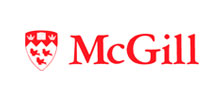Glioblastoma is the most aggressive and common malignant brain tumour, with a high rate of recurrence, and an average survival of less than a year if left untreated. Due to the complexity of these tumours, progress in developing treatments has been slow. According to the Brain Tumour Foundation, Canada has one of the highest incidences of brain tumours in the world, with 27 people diagnosed each day. A grim statistic for a cancer that profoundly affects an individual’s sense of self, even before it begins to impact their personality, cognition or independence.
After decades of research, Kevin Petrecca, MD, chief of Neurosurgery and director of the Brain Tumour Research Centre at The Neuro believes that stem cells may hold the key to slowing or stopping the recurrence of glioblastoma.
Understanding tumours, one cell at a time
“For the last 100 years, we studied the part of the tumour that was removed during surgery, and this allowed us to learn a lot,” explained Petrecca, a world-leading researcher specializing in glioblastoma. “When current treatments fail, it’s due to what remains in the brain. We haven’t had access to that, so it has been difficult to develop effective therapies.”
Single cell spatial resolution, a breakthrough imaging technique introduced over a decade ago, has given scientists the ability to analyze gene expression patterns inside individual cells while also preserving their precise location within a tissue. “This innovation changed the landscape. If you look at the tumour as a whole, it may seem more or less homogeneous. However, when we isolate individual cells, we see that there are in fact many different types and that a large amount of the cancer cells that invade the brain were not even visible on an MRI,” he stated.
A brain within a brain
This new imaging technique allowed Petrecca and his team to understand that glioblastoma is a form of neurodevelopment gone wrong. “The past decade of my lab’s research has been based on the bet that stem cells were the most important part of glioblastoma, and that they had not been well studied before,” noted Petrecca.
The brain has neural stem cells (NSCs) to support its ongoing development and maintenance throughout life. These cells are crucial for generating new neurons and glial cells (like astrocytes and oligodendrocytes) needed for learning and repair. However, in some individuals, stem cell proliferation becomes dysregulated and the impressive power of these cells to rapidly reproduce is turned against the brain.
“Within glioblastoma, there are billions of cells, and they are organized in a way that is very much like a brain within a brain. In the past, we thought tumours had few stem cells and that they didn’t divide. It turns out that 30% of a glioblastoma tumour is made up of stem cells and that all they do is divide and multiply. We have never had treatments specific to these before,” he explained.
Maturing stem cells
In order to get treatments out to patients faster, Petrecca and his team focussed on existing therapies, testing them on samples of patient tumours to see if they could produce the biological effects that they hoped for. One approach seemed particularly promising.
“In the lab, we used NOTCH receptor blockers to force the stem cells to mature, because more mature cells don’t divide. If we can push the stem cells to that later stage, we could slow tumour growth,” Petrecca explained.
NOTCH receptor blockers are already used in breast cancer and in a number of psychiatric diseases; this is an approved medication that is well tolerated at the appropriate dose. And most importantly, it is able to penetrate the blood brain barrier to reach the brain and the tumour.
Addressing recurrence
While the results on tumour tissue in the lab have been promising, Petrecca will be launching a phase 2 study at The Neuro’s Clinical Research Unit to evaluate the impact of using NOTCH receptor blockers in a patient with a newly diagnosed glioblastoma, after they have followed a standard course of treatment with chemotherapy and surgery.
The genetic makeup of brain tumours can vary greatly and the participant in this study will need to have a tumour type that appears driven by stem cell growth. Using single cell sequencing, the team will compare cell presentation, both before and after the treatment, in addition to other tests to validate if the treatment creates the biological effect they are hoping for. If this is the case, the patient will have the option to continue on the NOTCH receptor blocker, along with the standard of care.
“Regardless of the outcome, we need to learn from it. We will see what biology teaches us and how the tumour responds to the treatment in a particular patient. While this study is an early test of this hypothesis, the potential benefits could be very exciting,” Petrecca concludes.
For more information or to participate, contact the Brain Tumour Team at the Clinical Research Unit at The Neuro: bt-cru.neuro [at] mcgill.ca (); (514) 398-5500; cru.mcgill.ca/bt.







